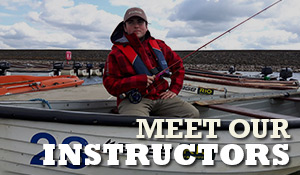As the water cools toward the late summer days of September, Eyebrook surrounded by grazing land comes alive with fish eating Crane Flies (Daddy Longlegs) as they get blown onto the water. Daddies are most active and on the wing towards late summer, feeding on plants stems, roots and grass. With all the farmland and long grass at Eyebrook, it makes it the perfect habitat to get large populations. So, with all the daddies in the air along the banks and neighbouring farmland all it needs is a bit of wind to blow these unstable fliers onto the water. Where after the dog days of summer the trout are waiting to make the most of this bounty.

(Picture: John Nowell)
On days where the daddies are being blown out on the water, the fishery can almost boil with surface activity with the trout in great competition for these protein rich flies. This can often result in some of the best fishing off the year with some great catches being recorded. When it comes to fishing the daddies at this time of year, there are a couple of tips that will help to maximise your catch rate.
Firstly, fish them on Fluorocarbon, as the daddies are quite a large pattern the fish can swirl at them. However, just because they haven’t eaten them straight off the top doesn’t mean that the chance of catching that fish has gone. Try giving them a twiddle when this is done on the sinking Fluorocarbon leader the fly will be pulled under the surface and the fish can, and normally does lock onto the moved fly and BINGO fish on.

My favourite fluorocarbon for this type of fishing is 8.5lb RIO FluroFlex Plus, the reason for this is that it naturally sinks so the flies and the leader bed in straight away. Then the flies can be twiddled back under the surface if you get a swirl. While still having a thin diameter means the flies aren’t dragged under straight away.

The second key bit is to not cast too far, there is no need to fish them as close as conventional dries. But casting nearly a full line will mean that you can’t work out if a fish has fully taken the fly or just swirled at it. If you cast around 20 yards, then you will still be able to see the flies and then work out if you need to strike for a positive dry fly take or give the fly a bit of movement to induce a take.
Giving the fly a little movement can also be great when casting at moving fish, if they haven’t taken within the first few seconds then give the fly a little twiddle to grab the fish’s attention.
With regards to the flies, the Fulling Mill daddies are our Guides favourite choice. The standard set up for Tom, Lee & Andy Miller is to use an orange foam daddy on the top dropper 8ft from the fly line with a natural foam daddy 8ft behind it. The orange daddy is great as a as a visual fly and can easily be seen if anything moves behind it, you know you need to act. Also, this colour contrast amongst the other flies can pull fish up with them either taking that or turning and taking the natural Tan pattern. On the days of a big wind, using a Fulling Mill DaddyHog can often produce the takes as the large fly with its big footprint pulls the fish up, this can either be fished on the top dropper or the visual pattern on the point.

Finally keep on the move long drifts over open water is the best way to make the most of this bumper time of year, as the fish will move over the open water looking to locate the next wind blown daddy, so by casting short and keeping on the move you will cover more water and therefore more fish in the process.
Available on the website Tuition & Guiding Manager Tom Bird has put together 6 of the Guides choice daddies with a special free postage offer https://www.flyfishstore.co.uk/offers/

